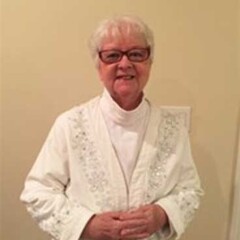On September 13th, just two days before her 70th birthday, Nancy Marriott was rushed to the emergency room in Boulder, Colorado with extreme shortness of breath. She had been near fainting during short trips to the bathroom, only able to sleep sitting up, and experiencing dizziness constantly. She was in very bad condition, having neglected to address her symptoms for weeks and instead attributing them to other health conditions that she had.
Unfortunately, Nancy had been struck by a bout of excruciating trigeminal neuralgia (nerve pain of the facial area) in early August. In an effort to avoid triggering the intolerable pain, she remained in bed for much of the month and tried to stay as still as possible. Little did she know the danger that she was putting herself in.
In combination with other risk factors including obesity, high blood pressure, and diabetes, the prolonged bed rest was the last contributing factor to the ‘perfect storm’ that caused Nancy to clot.
In this special interview, Kat and her mother, Nancy, share their perspectives as caregiver and patient, respectively.
“On a scale of 1-10, 10 being drop dead instantly, you are like an 8.5”
Kat: As Nancy’s daughter, I will never forget hearing the attending doctor quantifying my mother in such a morbid way, “On a scale of 1-10, 10 being drop dead instantly, you are like an 8.5”. Impressed by how close my mother came to death, the doctor scribbled up whiteboard diagrams of her two massive saddle PE’s, demonstrating how the obstructions kept the blood and oxygen from reaching her lungs. Seeing my mother in a hospital bed, skin completely gray, trying to comprehend all of it but looking so confused and defeated just broke my heart.
Nancy, how did you feel when you were first diagnosed?
I was terrified. Also, I felt confusion because I didn’t totally understand the relationship between the clots and the compromised oxygen levels and the right heart strain. I just felt very overwhelmed at the diagnosis and upset that I hadn’t known the risks beforehand.
Nancy, what was most important to your recovery and rehabilitation?
My daughter and my medical team were most important. PE/DVT can be a lot for for one person to handle alone, both emotionally and physically. My daughter helped me to understand more about my complicated condition and made me feel safe, as well as encouraging me to move forward from the incident and develop a healthier lifestyle. My medical team was both patient and kind to me.
Kat, as a caretaker, what advice could you give to other caretakers?
While it’s easy to freak out when a loved one is sick, I think it is important to harness this anxiety and use it as fuel to educate yourself about their condition. Seeking knowledge is a great way to care for your loved one because you are putting yourself in a position to help with decision-making, medication, scheduling doctor’s appointments, identifying possible worsening symptoms, and providing great support throughout the treatment process.
Kat, how has Nancy been since her hospitalization for PE?
She has made amazing progress. I don’t think I have ever seen her so proactive about her health – she is out walking laps, staying out of bed, low fat/low sodium diet (she has lost 30 pounds!), has lowered her blood pressure, and is very conscientious about INR testing. This is all very important in preventing a reoccurrence.
Nancy, what lessons have you learned?
Understand that health problems naturally have a way of snowballing into greater problems if they are not handled properly, and even sometimes when they are. Blood clots frequently occur alongside conditions like obesity, diabetes, cancer, and inflammatory bowel disease, to name a few. These conditions create a great challenge for individuals, but it is important not to give up on your health and to be vigilant about any new symptoms.
